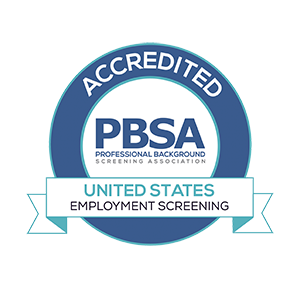Even as the country mourns the recent violence in Newtown, Connecticut, recent reports suggest that violence in the workplace is at an all-time low. Fatal work injuries have decreased by 21% since 2006 and by over 25% since 1992.
However, the tragedy at Sandy Hook Elementary School continues to remind us that workplace violence is a very real part of the American landscape and an important issue to keep in check. One way to limit and even prevent future occurrences may be through background checks on current employees.
The January 2011 Law Enforcement FBI Bulletin notes that many organizations across the country have programs for the prevention of workplace violence. Programs such as these can mitigate potential occurrences. Yet, statistics indicate…
…the third highest cause of death at work is homicide and still over 70% of U.S. businesses have no policy or formal program to address workplace violence.
Although, currently there are no methods to predict workplace violence, employers and their workers can take steps to reduce potential occurrences. Awareness and proactivity are the two most vital components.
Awareness. Often, clues that may indicate the potential for problems are dismissed or overlooked. However, the FBI suggests that workplace violence doesn’t happen…
…”out of the blue.” Rather, perpetrators usually display some behaviors of concern. Thus, awareness of these indicators and the subsequent implementation of an action plan to de-escalate potentially violent situations form essential components of workplace violence prevention.
Proactivity. Proactive measures can reduce the likelihood of an occurrence and reduce the risk to an organization and its employees. In addition to implementing a well-designed zero-tolerance policy, employers can:
- Help employees learn to recognize potential problems with co-workers
- Develop and communicate the company intervention plan and practice intervention techniques
- Install a 24/7 tip line that can be accessed via email, text, or voice
- Require criminal background checks on all new hires and periodically on current employees
As we noted in a previous blog, “Compliance and the Critical Difference between Arrest and Conviction Records,” it’s wise to follow the best practice guidelines offered by the Department of Labor when using criminal history to make employment decisions.
And if you need assistance with any of your employment screening needs, contact us. We have nearly 20 years of experience providing fully compliant background checks.


Leave a Reply
Want to join the discussion?Feel free to contribute!